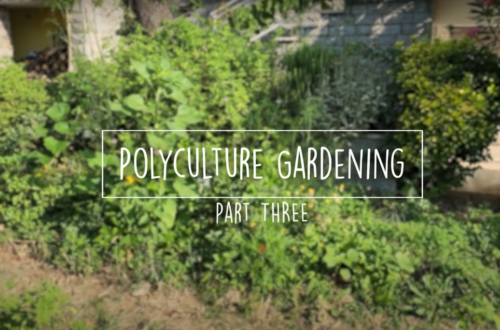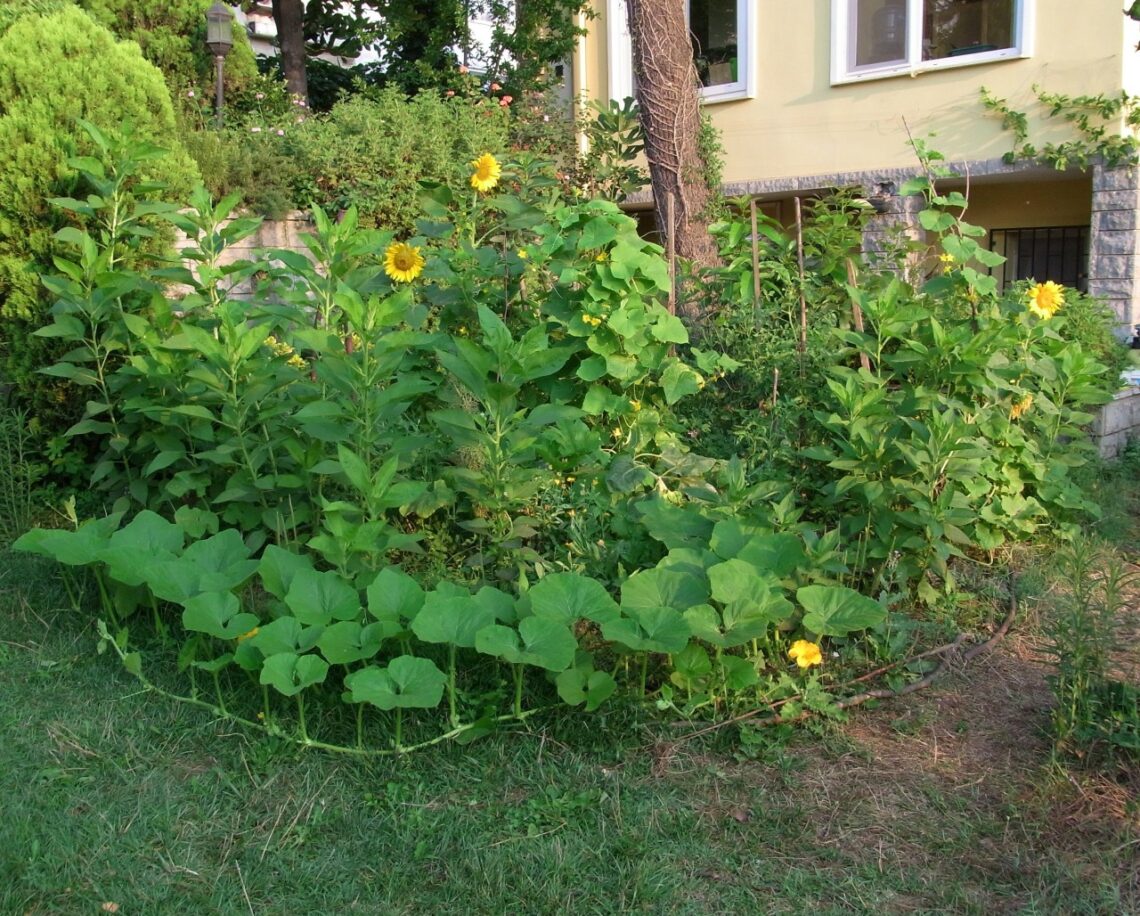
Polyculture Gardening
Polyculture Gardening
Instead of planting plain rows of single vegetables, I prefer to plant mixed vegetables according to companion planting principles. This way the plants are not left vulnerable to pest and diseases. I also try to leave some of the wild edibles in place, such as mallow that sprouted in winter and its thriving! It’s a wonderful edible and medicinal plant. Also I have plantain (plantago major) in many places in the garden which I leave alone.
Another benefit of the wild plants is that they serve as a trap crop for pests. Something that I observed in the beginning of summer is that colonies of aphids in chicories attracted ladybugs which are their natural predator. This way if aphids get into our vegetables, ladybugs are already present in the garden to eat them away! If in the beginning,we have gotten ridden of chicories and aphids, ladybugs would have no time to come into our garden when aphids would’ve been all over our vegetables.
Tomatoes, Carrots, Catnip and Zucchini
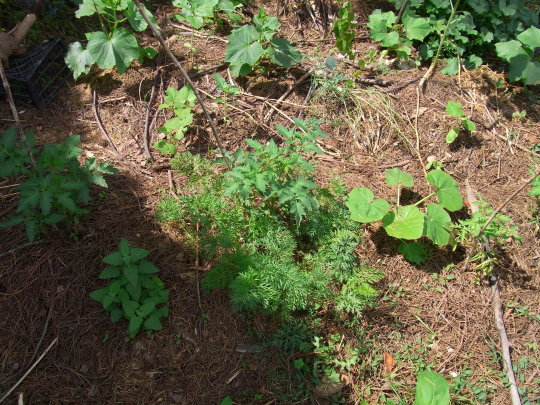
I sowed carrot seeds towards the end of March when the weather was still chilly.I put a cover on top and waited for them to sprout. When the weather warmed up I removed the cover and planted a tomato seedling in the middle of carrots. When tomato will grow, it will provide shade to carrots , while carrots will open up the soil with its tap root. Also carrots need low nitrogen to grow which creates a balance with nitrogen hungry tomatoes.
I planted catnip near them. ‘’It deters flea beetles, ants, aphids, weevils, cabbage white butterflies, and mice. It’s flowers attract many bees, hoverflies, and other pollinators. It also attracts parasitic wasps making catnip a very useful plant for the organic gardener ‘’(source).
Zucchini next to tomatoes make a good ground cover.
Calendula,Tomato, Onion, Lettuce
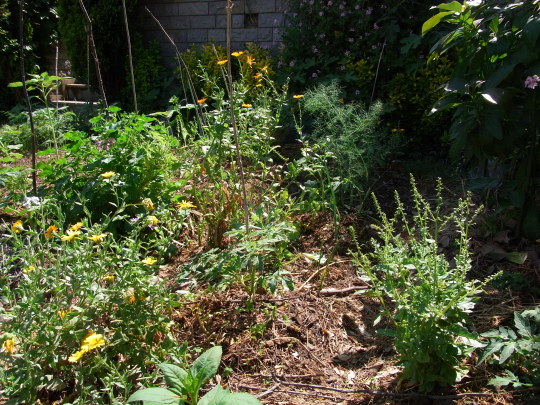
Calendula attracts pollinators and deters some pests.It can work as a trap crop by attracting pests such as aphids to itself rather than the vegetables. In my garden it self seeds and I have too many of them.Sometimes I just cut and drop them as mulch.
Onions next to tomatoes deter aphids and makes good use of space.
Lettuce benefits from the shade that tomatoes provide and it covers the soil underneath keeping it moist.
Fennel as I read everywhere, fennel is a allopathic plant that doesn’t have any companions.But I had one growing in the bed since last year, and I let it stay there and see that happens!
Mallow (Malva sylvestris)
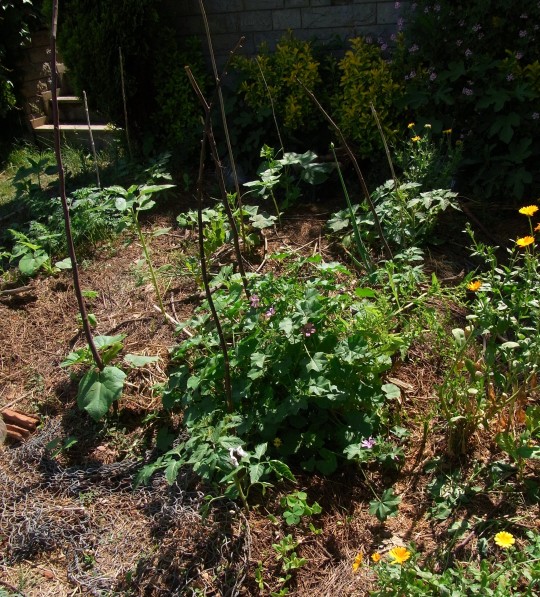
Mallow found a perfect spot for itself in winter. We ate a lot of it in stir fries and soups. It grew so much that I had to cut it back.It still grows happily, new tender leaves are coming out each day which means food for us! It also has many medicinal uses and its beautiful flowers attract many pollinators including butterflies. So I left it where it is and I planted my tomato seedlings on either side of it.
Cucumbers,Sunflowers and Pole beans
On the left row, I planted cucumbers and sunflowers together thinking that cucumbers will climb on sunflowers.On the empty spots I just stuck some bean seeds so they will also climb on sunflowers and will feed the soil with nitrogen.
Sunchokes for Edging

All around the edges I planted sunchokes (or jerusalem artichokes). I just bought half kilo of them in the market and planted them in mid-March.They sprouted about after a month.
They grow very tall, are perennial, have beautiful flowers and will be a living fence! We have many cats in the garden and it will be nice to have some kind of barrier for them.
Pumpkin in the Corner
I planted a pumpkin seedling in the corner so it can spread outside and have as much space as it wants while keeping the soil covered and moist.



